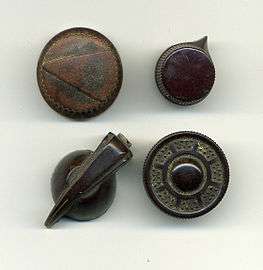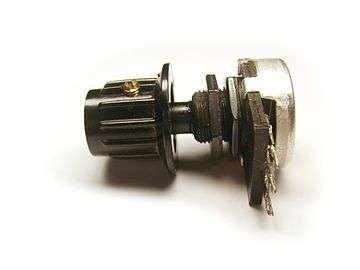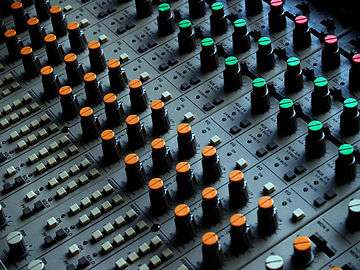Control knob

A control knob is a rotary control used to provide input to a device when grasped by an operator and turned, so that the degree of rotation corresponds to the desired input. Such knobs are one of the most common components in control systems and are found on all sorts of devices.[1]
Overview
Such knobs vary greatly in form, but as a rule they are expected to be grasped by the fingertips. By convention a clockwise rotation ordinarily produces an "increased" input, whatever that is understood to be. Knobs may turn continuously or may have detents to produce discrete selections; they commonly have a scale with a pointer to aid achievement of the desired setting, though it is common for the gradations in the scale to have no concrete meaning (e.g. the markings of a volume control). There is frequently a fixed "off" position at the origin of movement in which the knob actuates a switch shutting down whatever behavior is controlled, rather than having a separate on/off switch.
Operation
A control knob works by turning a shaft which connects to the component which produces the actual input. Common control components used include potentiometers, variable capacitors, and rotary switches. An example where the knob does not produce a variation in an electrical signal may be found in many toasters, where the darkness knob moves the thermostat in such a way as to change the temperature at which it opens and releases the cooked toast. Some similar controls produce similar inputs using different geometry; for example, the knob may be replaced by a lever which is moved through an angle. Another example is the sliding controls which frequently replace knobs as level controls in audio equipment.
Feedback
The use of knobs is an important aspect of the design of user interfaces in these devices. Particular attention needs to be paid to the feedback to the operator from the adjustments being made. The use of a pointer on the knob in conjunction with a scale assists in producing repeatable settings; in other cases there may be a dial or other indicator which is either mechanically linked the knob's rotation (as in many older radio tuners) or which reports the behavior being controlled.
Examples
-

various knobs, three of which incorporate pointers to indicate setting
-

the knob on the left turns the shaft of a potentiometer
-

a control panel with knobs color-coded according to function